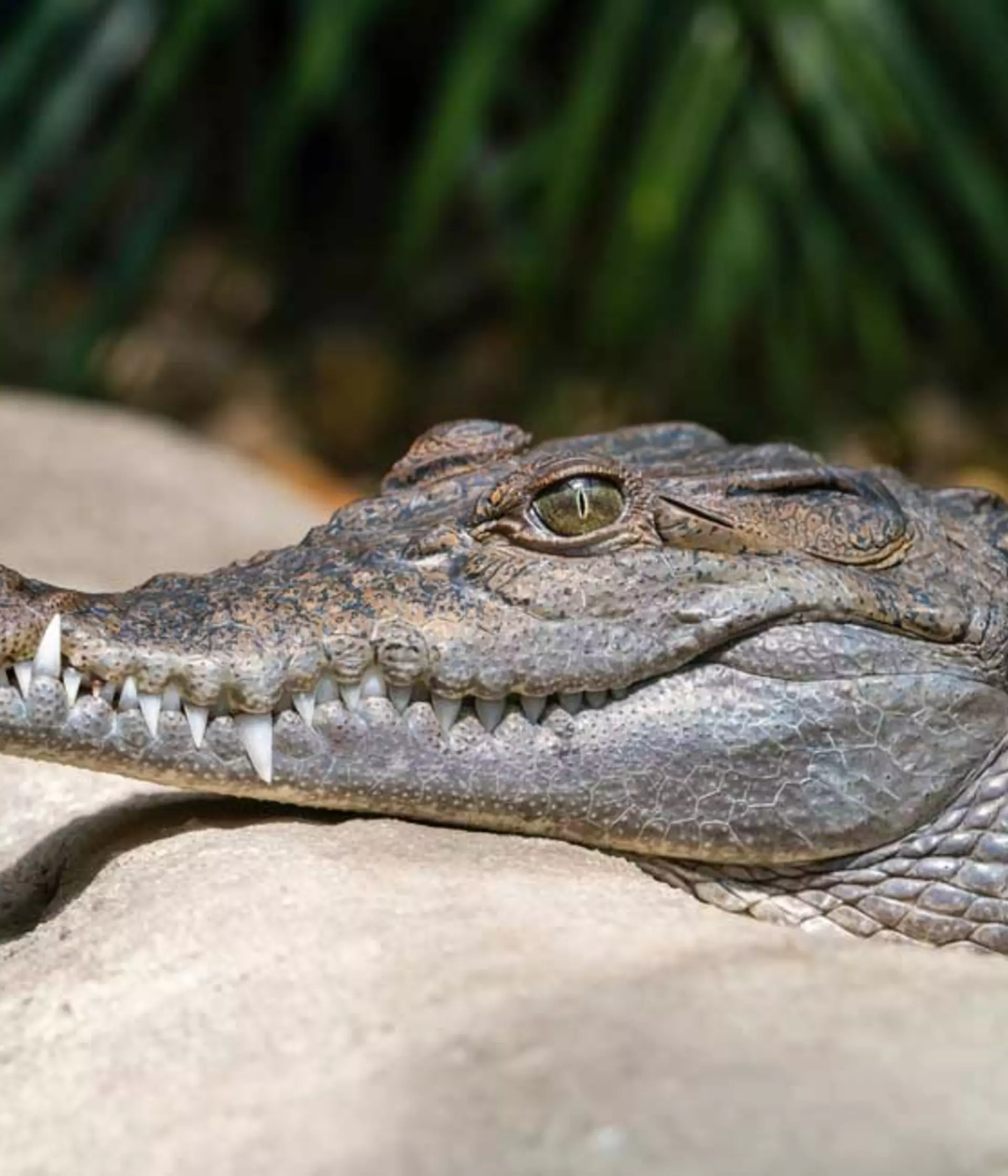A relatively small species of crocodile, the Philippine crocodile has up to 68 teeth that constantly fallout and replenish.
They have a long broad snout and thick armoured plates of bone on their back. They can float on the surface of lakes and streams, weighing themselves down by eating stones in order to adjust their buoyancy.
Philippine crocodile facts
- The Philippine crocodile is one of the smaller crocodile species.
- Philippine crocodiles have a 100 year lifespan.
- When the hatchlings appear, the female carefully carries them in her mouth down to the water.
- This species used to be found throughout the Philippines the population is now fragmented and the species is only found on a few islands.
- Females lay 7-20 eggs in nests made of plants.
- It's one of the rarest crocodiles on the planet.
What do Philippine crocodiles eat?
Fish, water birds, lizards and snakes.
Philippine crocodile threats
Habitat destruction, forest clearance for rice fields and local intolerance leading to persecution.
Philippine crocodile conservation
We were the first zoo in the UK to breed this species and we also financially support conservation efforts in the field through our partner, The Mabuwaya Foundation. The Philippine crocodile is also a ZSL EDGE species, which means they are both evolutionary distinct (ED) and globally endangered (GE). Through our EDGE programme we are championing species which are a unique and irreplaceable part of our world’s biodiversity.
As staff prepared to open The Secret Life of Reptiles and Amphibians at London Zoo, careful steps were taken to move some of our most incredible species into their new home.
